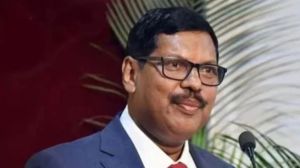Players see telecom sector as a licence to growth
DoT has received nearly 300 applications for new licences. While some of the applicants are not even known in telecom circles, there are some big names that are planning a foray into the telecom business.

With up to six telecom operators providing mobile telephone services in a region, India is among the most competitive markets in the world. Owing to a large number of players, no wonder the price of telecom services here is also among the lowest in the world. For instance, average revenues per user (ARPU) of GSM-based mobile service operators is Rs 297 per month and Rs 206 per month for CDMA-based operators, according to TRAI data for the April-June quarter. By comparison, in Europe, ARPU of mobile operators ranges from Rs 1,600 to Rs 1,800 per month.
Then, why is there such a big rush for telecom licences?
Last week, Sanchar Bhawan was full of hectic activity. By October 1, the last date for applying for licences, the department of telecommunications (DoT) received nearly 300 applications. While some of the applicants are not even known in telecom circles, there are some big names that are mulling a foray into this sector.
Serious telecom players like AT&T, Shyam and HFCL Infotel have applied for licences. AT&T is among the largest telecom operators in the world, and currently provides international long distance (ILD) and national long distance (NLD) services. Shyam is operating services in Rajasthan and HFCL is an operator in Punjab.
Apart from these, there are companies like DLF, Parsavnath, BPL Mobile, Moser Baer and Videocon who have applied for the licence. Swan, Cheetah, Datacom Solutions, Alliance Infratech, Prithvi Solutions, Avinija Properties, Meta Telecommunications are some of the lesser known companies who have applied for licences.
It seems that everyone wants to have a share of the expanding telecom subscriber base. With an addition of over seven million new mobile subscribers every month, India is the fastest growing telecom market in the world in terms of subscriber base. Airtel CEO Manoj Kohli said the company expects to add 50 million new telephone subscribers in two years.
What is more important is that the telecom companies are quoting at very high valuations. Bharti Airtel is currently trading at a PE of 39.8 and Reliance Communications is trading at a PE of 47.3. Bharti Airtel’s share closed at Rs 994 and the Reliance Communication scrip ended at Rs 645 on the National Stock Exchange on Friday. More than a sign of overvaluation, the high PE reflects investor expectations that the high growth seen in the last 2-3 years will continue.
Applicants seem to be taking a cue from the high valuations and robust growth reported by current telecom players. Some of them even think that they will be able to create a good value for the company if, as a licencee, they are allotted spectrum.
Now, the bigger question is, whether DoT can issue licences to all companies that have applied? The government has already clarified that there won’t be any cap on the number of players in a circle. Even though existing GSM operators are strongly lobbying for a cap to preserve their hold, the Telecom Regulatory Authority of India (TRAI) is against such a move. The new applicants, on the other hand, want licences to be given to all.
The government can give licences to all new applicants, but can it give them spectrum, the backbone of mobile telephony?
Spectrum is a limited resource. The present policy doesn’t encourage telecom operators to use it efficiently. In many countries, spectrum is auctioned. In India, there is no one-time fee for spectrum. Instead, operators have to pay a share of their revenue as spectrum fee. In order to make optimum use of spectrum, operators have to invest in infrastructure, which no one wants to do. Therefore, they tend to use it in an inefficient manner. Currently, most of the existing operators have sought additional spectrum.
Therefore, the challenge for DoT is to assign spectrum to new players. The criteria should be such that the hoarding of spectrum is discouraged. Those who intend to trade spectrum shouldn’t be allowed to do so. TRAI has recommended that there should be new guidelines for spectrum. The government has also said that it will come out with new guidelines for licences and spectrum within 10 days. Then, there will be more clarity on the status of new players in the field.
Ringing Rush
• 300 applications received for providing telecom services
• High valuations of existing telecom operators has attracted many new entrants
• DoT to formulate guidelines for new licences and spectrum allocation in 10 days
• Limited availability of spectrum is an important issue



- 01
- 02
- 03
- 04
- 05




























